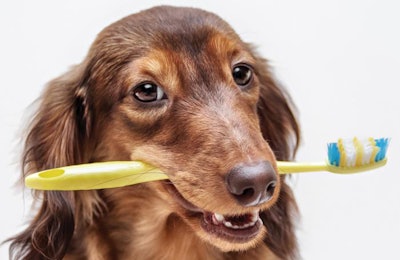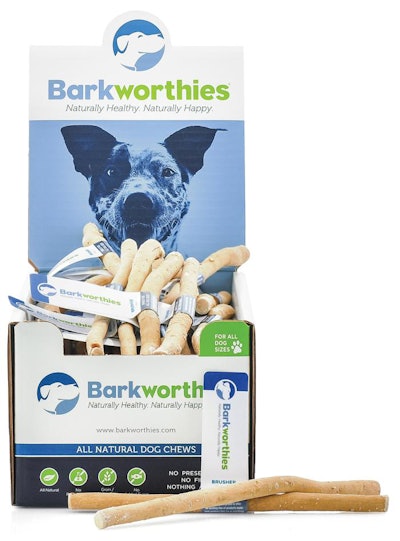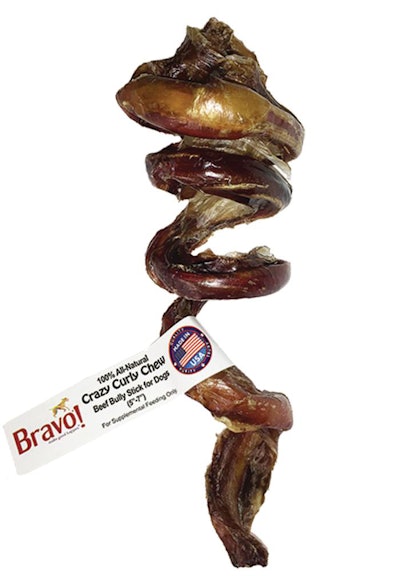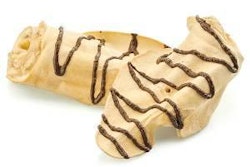
Dental disease of some kind affects 76 percent of dogs and 68 percent of cats. Some of the primary risk factors, such as increasing age and small breed size, play directly into today’s pet-owning landscape — pets are living longer than ever, and small breed ownership is on the rise. And while regular dental examinations and cleanings are the primary steps in preventing various dental ailments (inflammation, tartar, gingivitis, periodontal disease), things like dental chews, water additives and specially formulated pet foods can also play important roles in pet dental health.
The rise in pet dental disease
According to Banfield Pet Hospital’s “State of Pet Health Report 2016,” there has been a 23.3 percent rise in the prevalence of dental disease in dogs since 2006, with steady growth each year (see Figure 1). There has also been a 23.1 percent rise in the prevalence of dental disease in cats in the last 10 years, as well as an increase in other painful dental conditions (68.8 percent increase in stomatitis, 1,587 percent increase in tooth reabsorption).

FIGURE 1: Dental disease in both dogs and cats has increased over the last 10 years. At-home dental care, including offering dental chews and specialty food formulas, can help slow the progression of dental disease.
Beyond the obvious, there are unexpected health complications associated with dental disease: for example, periodontal disease has been associated with an increased risk of developing chronic kidney disease, especially in cats. According to research, if periodontal disease were eliminated, there could be up to 15,000 fewer cases of chronic kidney disease in cats in the US.
What do these numbers mean for the pet food industry? About US$1 billion by 2020, according to a 2015 Packaged Facts report (“Pet Oral Care Products and Services in the US”). Roughly 84 percent of all pet oral care products are dental chews and treats, providing a significant opportunity for treat manufacturers or those dealing in specialty products to expand their offerings.
Giving consumers what they want
Since only 20 percent of dog owners and 11 percent of cat owners brush their pets’ teeth, according to Packaged Facts, consumers are clearly looking to treats and similar products to help their pets maintain dental health outside of the veterinarian’s office.
As with trends in other pet food segments, consumers focused on their pets’ dental health are looking for a combination of functionality and nutrition in their dental treats and chews. They want to know that the treats are proven to help prevent dental issues, but they also want those treats to fit in with their dog or cat’s current diet: those with pets on specialty diets (limited ingredient, allergen avoidance, weight control), for example, will be hunting for grain-free, all-natural or low-calorie treats.
There are several new products on the market aiming to provide just what pet owners are looking for.
Barkworthies introduced their new Brushers, a 100 percent organic dog dental chew inspired by the historical use of twigs by humans to keep their teeth clean, at SuperZoo 2016. “Crafted from the branches of the East Indies Arrack tree, these twigs when chewed release a powerful antibiotic which helps naturally suppress the growth of bacteria and the formation of plaque,” said the company. Parallel “bristles” also act like dental floss to clean between canine teeth. Beyond tooth-cleaning functionality, Barkworthies focused on health, and Brushers contain potassium, sodium, chloride, sodium bicarbonate and calcium oxides — minerals that aid in strengthening tooth enamel, according to the company.

Barkworthies Brushers are a canine dental chew inspired by the historical human use of twigs for teeth cleaning. In addition to providing cleaning and tooth enamel strengthening, the Brushers are harvested from a sustainable, renewable resource and are 100 percent natural. | Courtesy Barkworthies
Bravo Pet Foods has announced an addition to their line of all-natural chews, the Crazy Curly Beef Bully Stick for dogs. The grain- and gluten-free treats are made from premium-quality beef pizzle, according to the company, and helps keep teeth clean while promoting healthy teeth and gums. The chews have no added preservatives, flavors or colors and are made in the US.

Bravo Pet Foods’ Crazy Curly Chew Beef Bully Sticks for dogs help keep dogs’ teeth clean and promote healthy teeth and gums. Sticks are 100 percent natural and made in the US. | Courtesy Bravo Pet Foods
K-10+ advanced dental sticks for dogs offer options for both large and small breeds. Both versions reduce tartar accumulation and support healthy teeth and gums, according to the company. Each stick contains mini oral care strips that dissolve in a dog’s mouth and are specifically designed to freshen breath without brushing.
Hill’s Pet Nutrition offers a line of pet foods geared towards oral care, both for dogs and cats, found in both their Prescription Diet and Science Diet lines. The prescription diet feline and canine dental care formulas are designed to clean the tooth surface, fight plaque and promote overall health, according to the company. A unique kibble size and shape and special fiber matrix technology assist the formulation. Hill’s Science Diet Adult Oral Care Dry formulas for cats and dogs both use clinically proven kibble technology to help reduce plaque and tartar, according to the company. They also provide daily dental protection to freshen breath and have antioxidant benefits, and there are no artificial colors, flavors or preservatives involved.
The future of pet dental health
As consumers continue to look for affordable daily prevention options to protect their pets’ teeth, they’re going to set their sights on pet foods and treats. With animals living longer, thus increasing the chances for all sorts of health issues to appear, pet owners will aim to mitigate what they can — dental health is one of those things, and the industry can, and should, provide solutions.
A look back: Pet dental health in the pet food industry, 2016

















